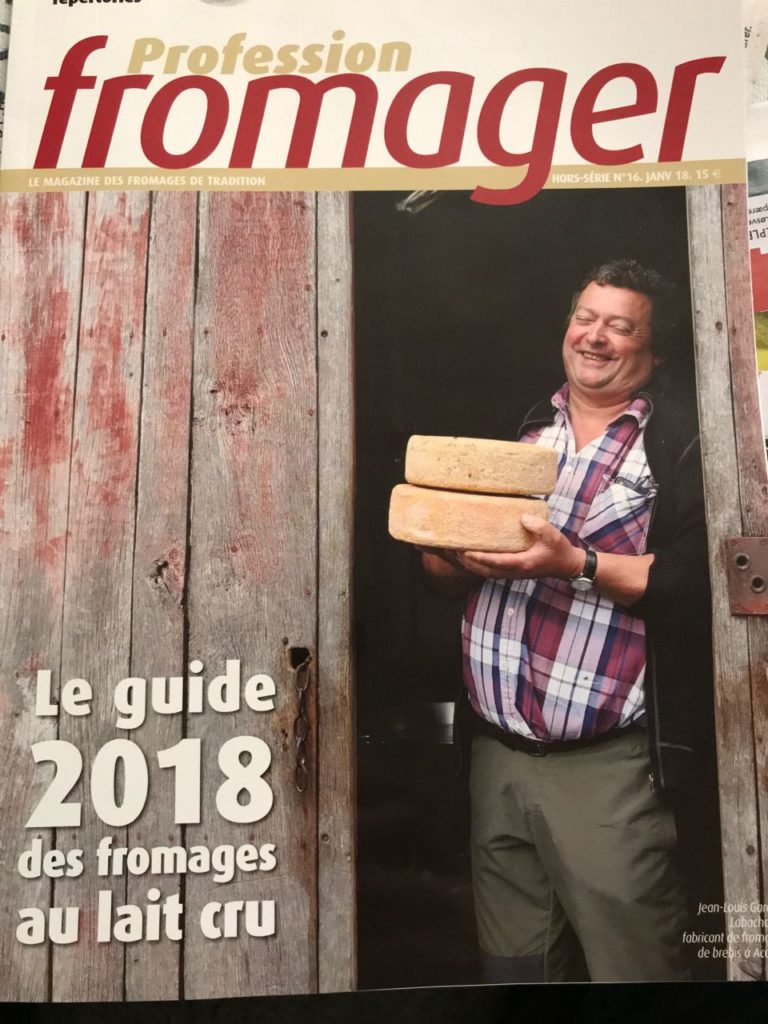Every time I find the French magazine Profession Fromager in my letterbox I know I have a few challenges ahead. With my school French, still somehow there, Google translate and whatever is available I by and large manage to get through the magazine. Much easier this time as the complete magazine was a huge list of French raw milk cheese producers and some facts about the development of French PDO cheeses.

45 French PDO cheeses
These 45 cheeses are divided into 28 cheese from cow’s milk, 14 from goat’s milk and a mere three cheeses from ewe’s milk. For 27 of them it is required they’re made from raw milk, while the rest can be either or. I do not think any has to made from pasteurized milk. There are of course cheese where you hardly can find a raw milk variety, that is so. So if you are like me, always looking for raw milk cheeses, check if it says “Au lait cru” on the label. Sometimes it also says “entier” which means the milk has been separated and the fat added afterwards to secure an even amount of fat through the year. As it is the fat content of milk may vary over the year, depending of season, fodder and of course type of animal.
Comté at the top
Comté, the wheel from Jura, has long since been the most consumed cheese in France. And it still is. With a growth of almost 20 per cent over the the ten-year-period from 2006 to 2016 it consolidates its position. That’s very good, because in total the consumption of French PDO cheeses is down over the same period. Only one per cent, but still down. The statistics say nothing about the total consumption of cheese in France and whether it has shifted in an other direction or not. That could of course be interesting enough to know.
At the other end we have the tiny chèvre Mâconnais from the south of Burgundy with an increase of 464 per cent. A small cheese in its own right weighing only 50 to 60 grams, but the annual volume has increased from 15 to 85 tonnes. The picture is not just bright unfortunately, the farmstead production is in decline.
The big loser
The big loser is, with a 7493 tonnes decline over the ten-year-period, Camembert de Normandie. I suppose that partly reflects the internal fight going on between those who want to keep the rules as they are and those (big players) wanting to simplyfy the rules thinking Fabrique en Normandie is sufficient. Simplified means the cheese is made in Normandie, but the milk could come from anywhere (in France, I suppose). This may also imply that Camembert not necessarily is in decline as a whole, if you accept other varieties also be called Camembert, but consumption has shifted. I do not know. But it seems like the conditions for the producers of Camembert de Normandie get tougher by the day. Speculations of course, but not completely without any reality.
Also read: Camembert vs. Camembert – Who’s winning?
The special one
The most special one, according to the list and in my opinion is the Corsican cheese Brocciu. A fresh ewe’s milk cheese made from whey with a 10 to 15 per cent milk added. heated up till 90 degrees centigrade and stirred all along the way until whatever is left of curd has solidified. A ricotta style cheese sold at the markets in Corsica.
